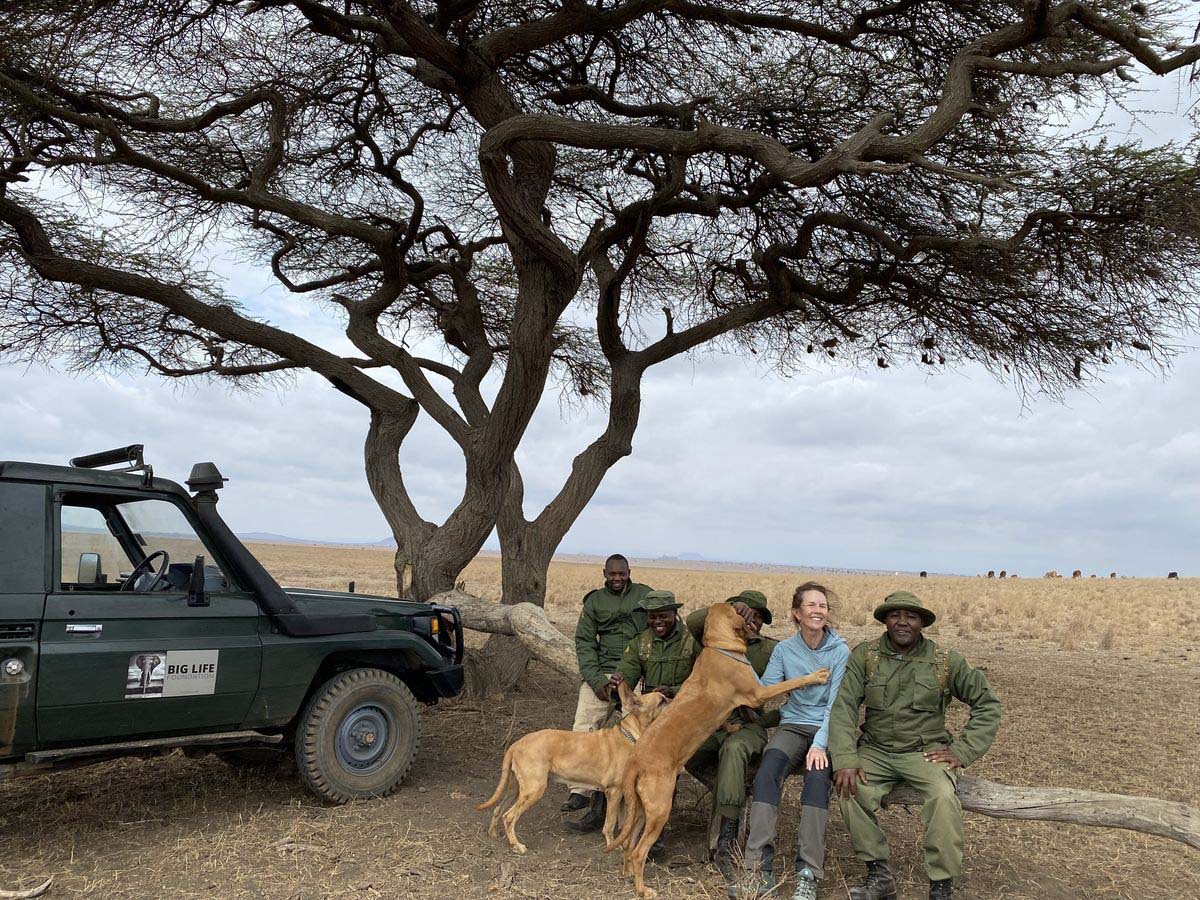 Jewelry may be her primary trade, but for Temple St. Clair, her deep love of nature has always come first. It has informed so many choices in her life, including her career—she founded her eponymous company in 1986 in Florence, Italy—and it is present in her most iconic creations (see: the Tree of Life collection and her Golden Menagerie haute couture pieces). "Though I never planned to be a jewelry designer, it was an organic evolution born out of a love for detail, research, creativity, and storytelling," St. Clair says. "My favorite creative outlet is spending time observing wild animals and translating that sense of discovery into gold, gems, and watercolors."
Jewelry may be her primary trade, but for Temple St. Clair, her deep love of nature has always come first. It has informed so many choices in her life, including her career—she founded her eponymous company in 1986 in Florence, Italy—and it is present in her most iconic creations (see: the Tree of Life collection and her Golden Menagerie haute couture pieces). "Though I never planned to be a jewelry designer, it was an organic evolution born out of a love for detail, research, creativity, and storytelling," St. Clair says. "My favorite creative outlet is spending time observing wild animals and translating that sense of discovery into gold, gems, and watercolors."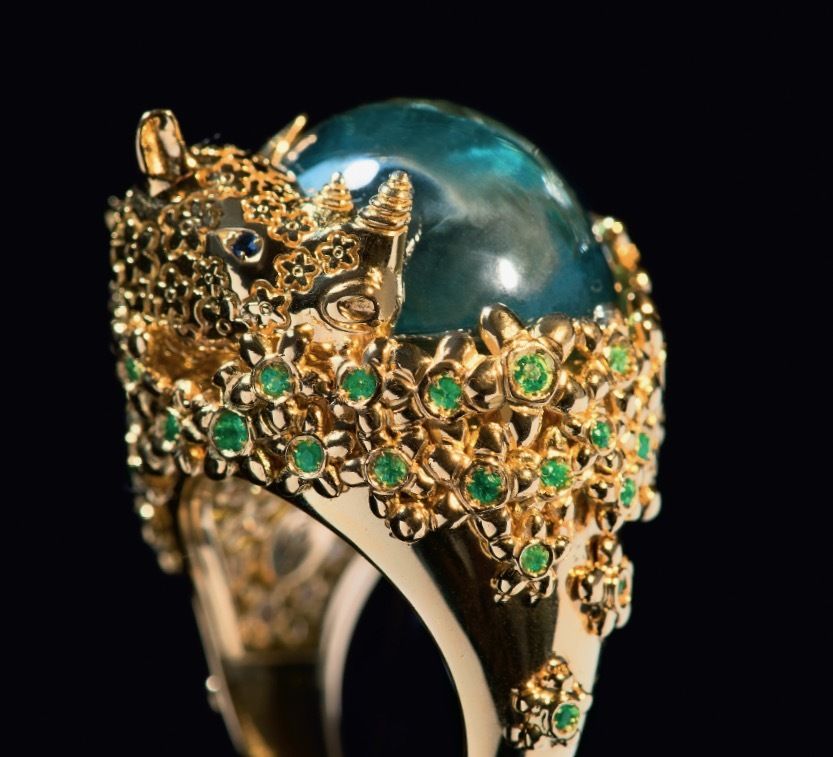
The Rhinoceros ring from Temple St. Clair’s Golden Menagerie collection.
So it comes as no surprise that the designer is also an avid conservationist, a title she officially added to her resume in 2019 when she became involved with the Big Life Foundation, an East Africa-based nonprofit committed to protecting the area's wildlife. St. Clair was introduced to the organization by a client—she is now on its board of directors.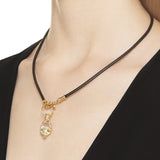 "I work to save what I love," she says. And she means it literally. The designer is turning Giving Tuesday into Giving Week: from November 26 to December 2, she is directing 20% of all sales from templestclair.com and her new Manhattan flagship to Big Life. What's more, for the rest of the year, 20% of sales of the Rock Crystal Vine Amulet (which is inspired by the goddess Diana, protectress of wild lands and wild creatures) will go to the organization, too. Below, St. Clair talks to T&C about her work with Big Life—and the accomplishments she is most proud of.
"I work to save what I love," she says. And she means it literally. The designer is turning Giving Tuesday into Giving Week: from November 26 to December 2, she is directing 20% of all sales from templestclair.com and her new Manhattan flagship to Big Life. What's more, for the rest of the year, 20% of sales of the Rock Crystal Vine Amulet (which is inspired by the goddess Diana, protectress of wild lands and wild creatures) will go to the organization, too. Below, St. Clair talks to T&C about her work with Big Life—and the accomplishments she is most proud of.
What were some of the formative moments of your life that shaped your passion for nature and protecting wildlife?
My family instilled me with a profound respect for nature. As a child, I was encouraged to create and curate my own “museum” with shells, minerals, and fossils that I found. I also spent a lot of time underwater and was sure I would be a marine biologist. I learned to photograph, draw, and document what I observed.
Tell us about the work that the Big Life Foundation does.
Founded by Kenyan conservationist Richard Bonham and British photographer Nick Brandt, the Big Life Foundation employs hundreds of local Maasais as rangers, educates children on conservation in the local schools, and provides family health planning to women.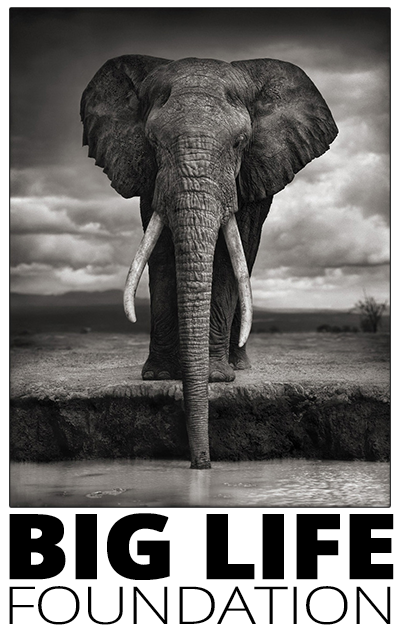
This elephant, named Igor, was lost to poachers. It’s what inspired Nick Brandt, who took this photograph, to co-found Big Life.
The organization protects the largest tusker elephants remaining on the earth from poaching; diverts Maasai warriors from killing lions by compensating them for loss of livestock; and removes deadly snares so giraffes and zebra don’t end up as bushmeat. It's literally redrawing the future of the Amboseli-Kilimanjaro-Tsavo ecosystem, which covers more than 1.6 million acres, and creating a new model for conservation practices across East Africa and beyond.
What successes and accomplishments are you most proud of at Big Life?
The recovering wildlife populations: in our operating area we have increasing numbers of lions, elephants, and giraffes that share the ecosystem with nearly a quarter million people. It's groundbreaking to have this kind of conservation success.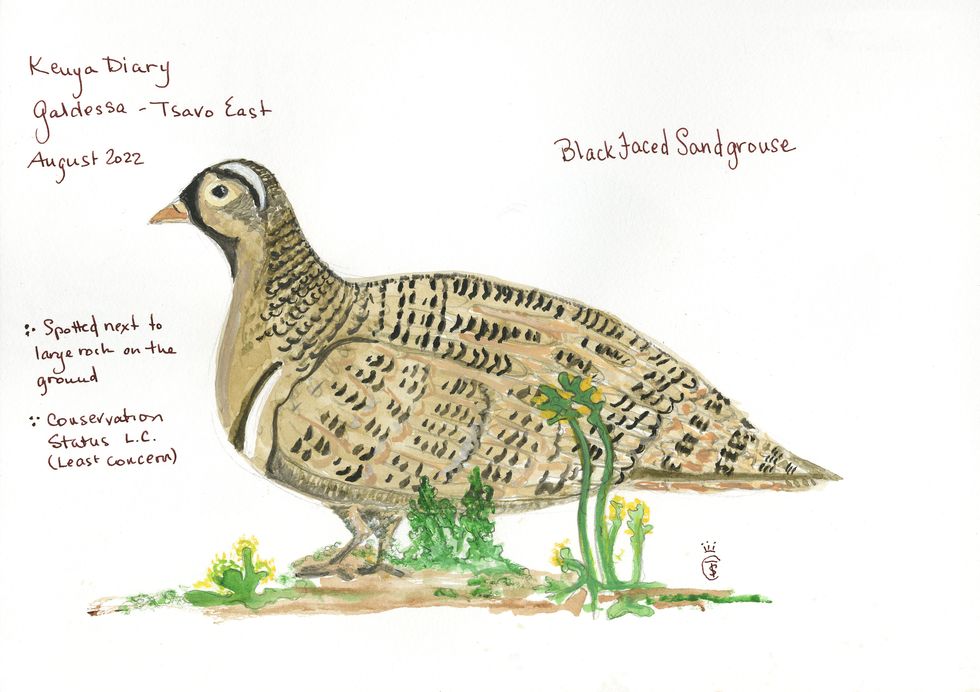 A watercolor from Temple St. Clair’s Kenya diary.
A watercolor from Temple St. Clair’s Kenya diary.
What are some of the challenges that your Giving Tuesday efforts will be directed toward?
Big Life’s current efforts are focused on maintaining the level of wildlife conservation success while protecting the habitat and supporting the needs of the local community. Temple St. Clair will be spreading awareness about Paolo's Problem. Paolo is a mature large tusker elephant that carries 200 kilos of ivory. He and his relatives need ancient migration routes to be open and protected. Big Life is working to protect land from development so that the wildlife can continue to roam freely and safely, and so that local Maasai herders can continue to maintain their livelihood.
Read the Original Article.
Leena Kim is an editor at Town & Country, where she covers travel, jewelry, education, weddings, and culture.
